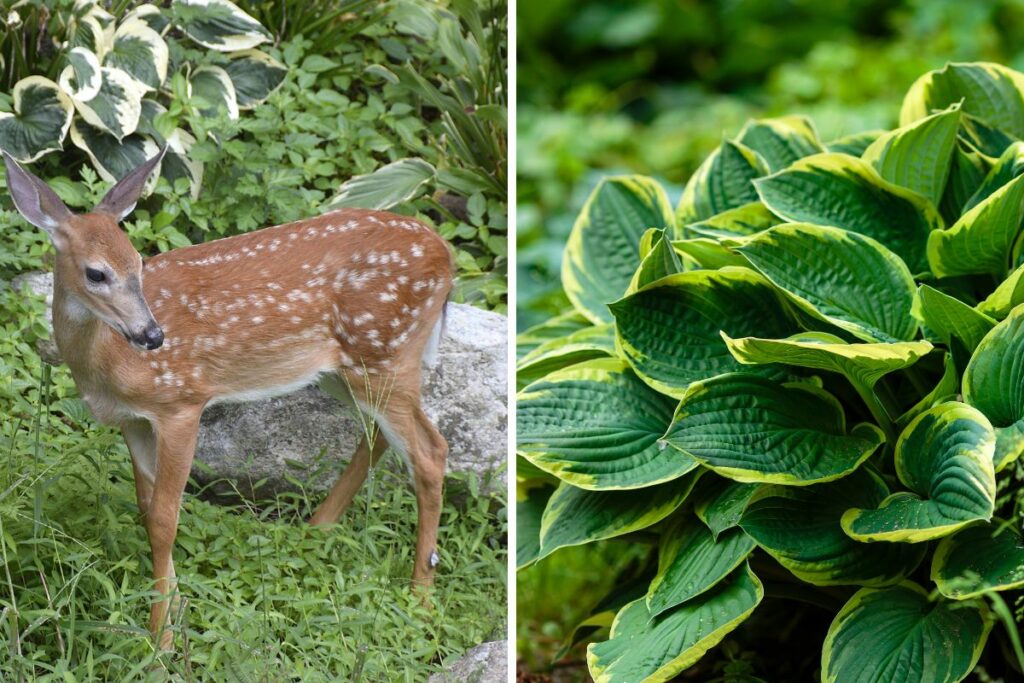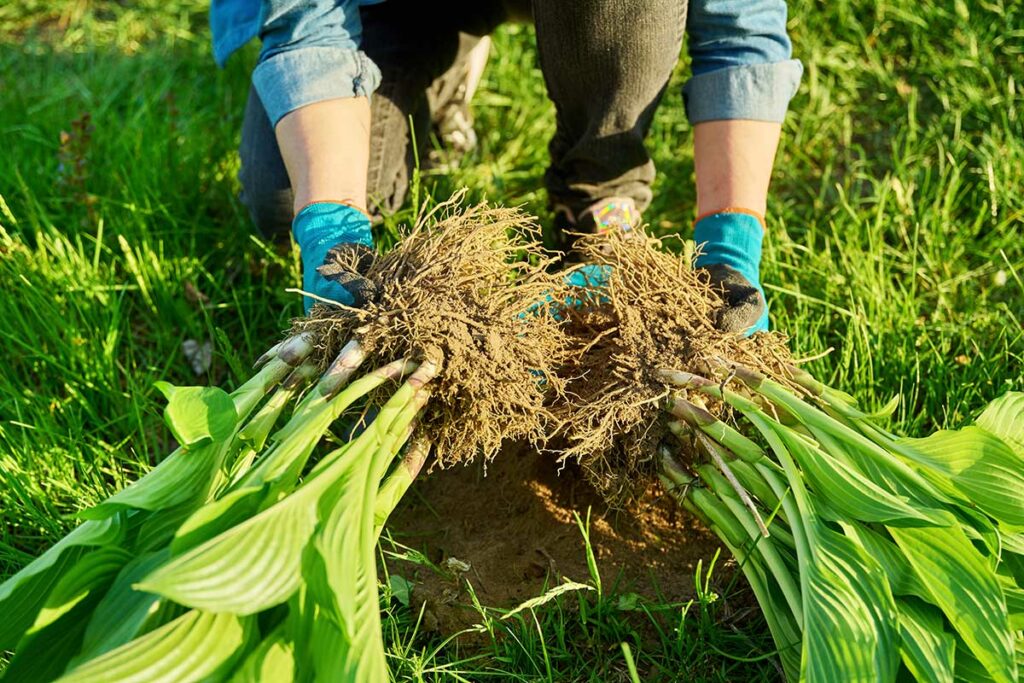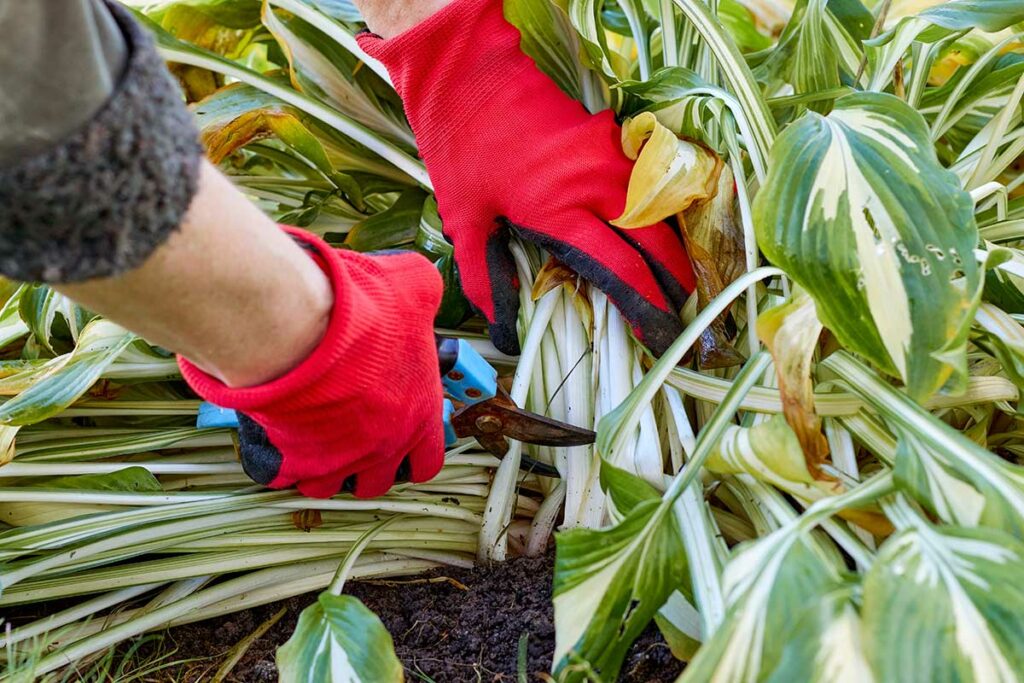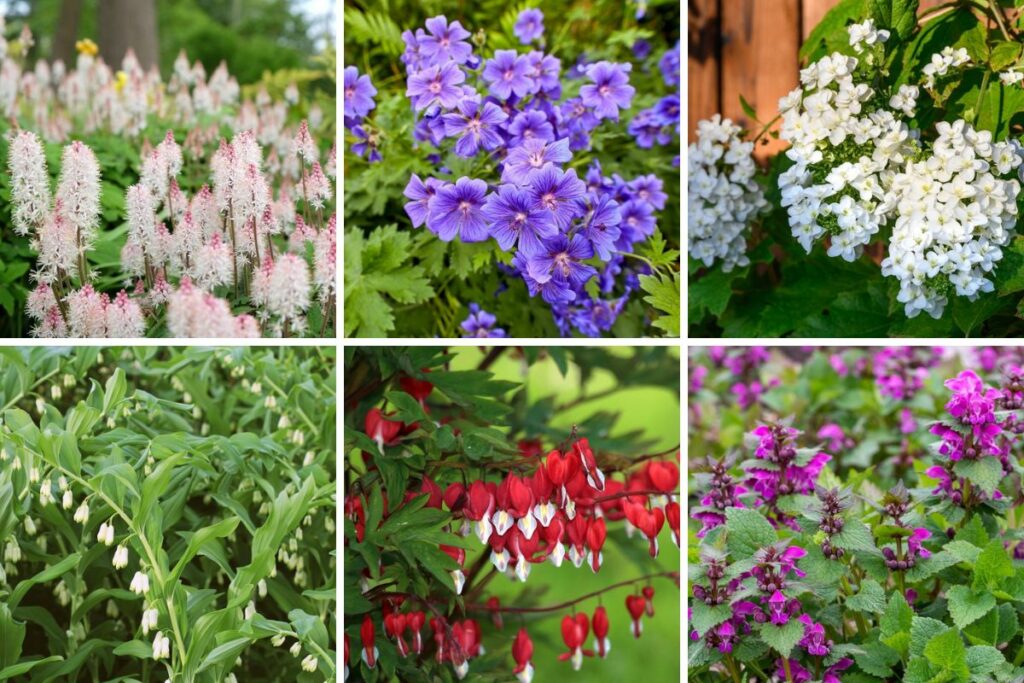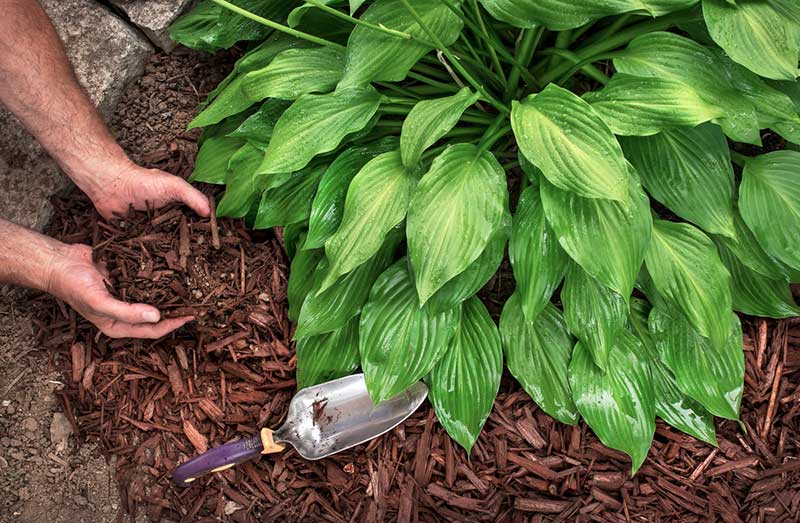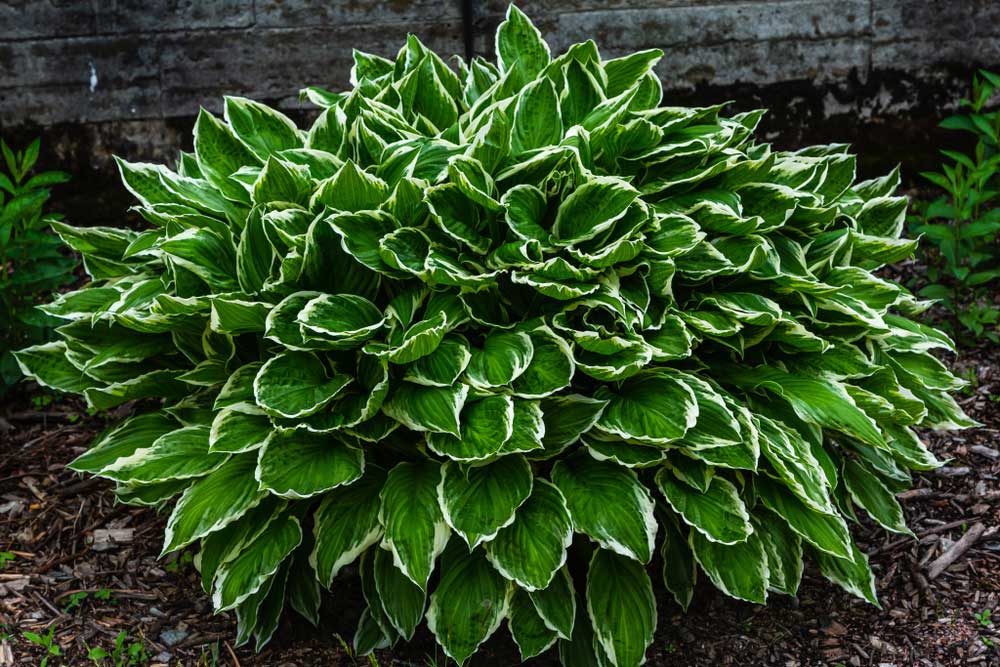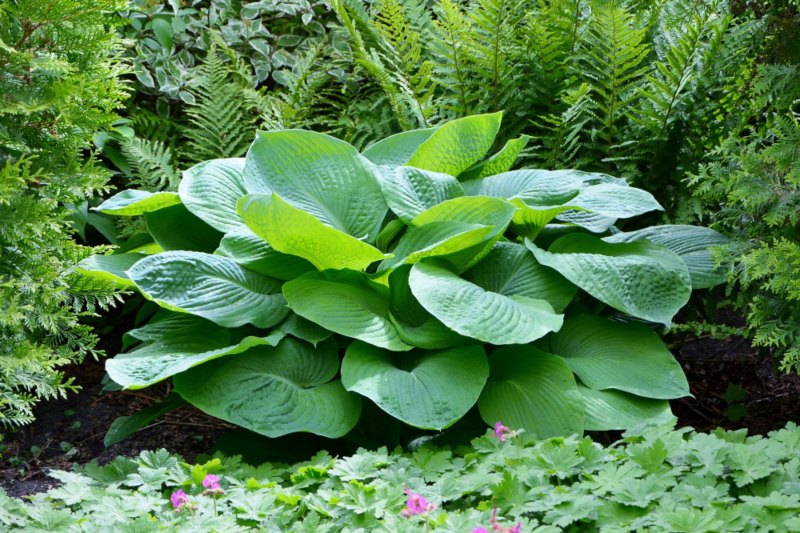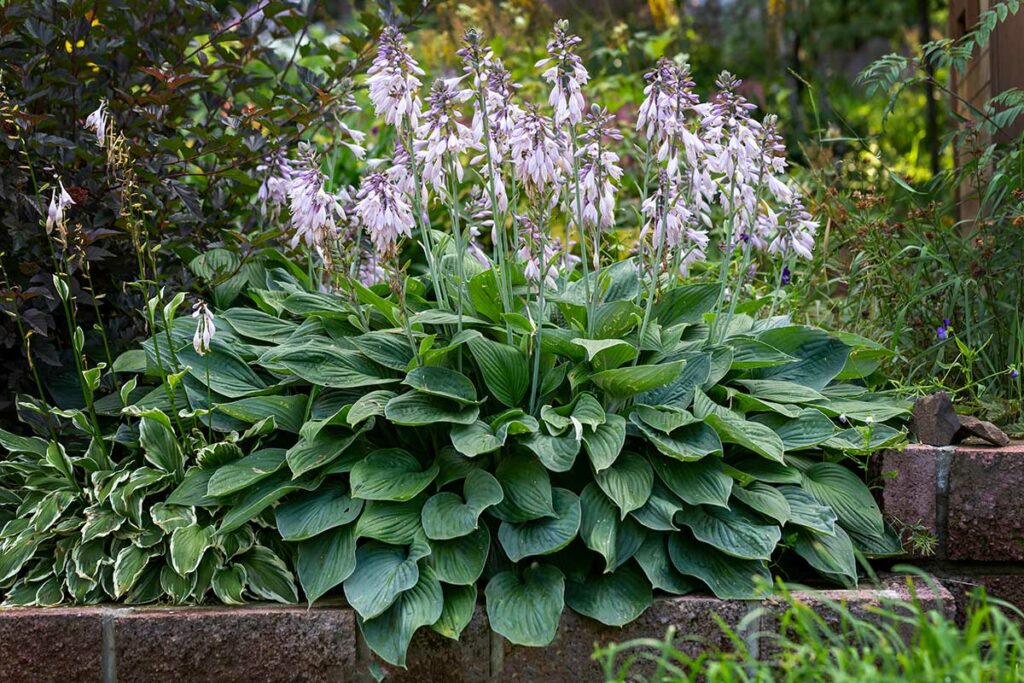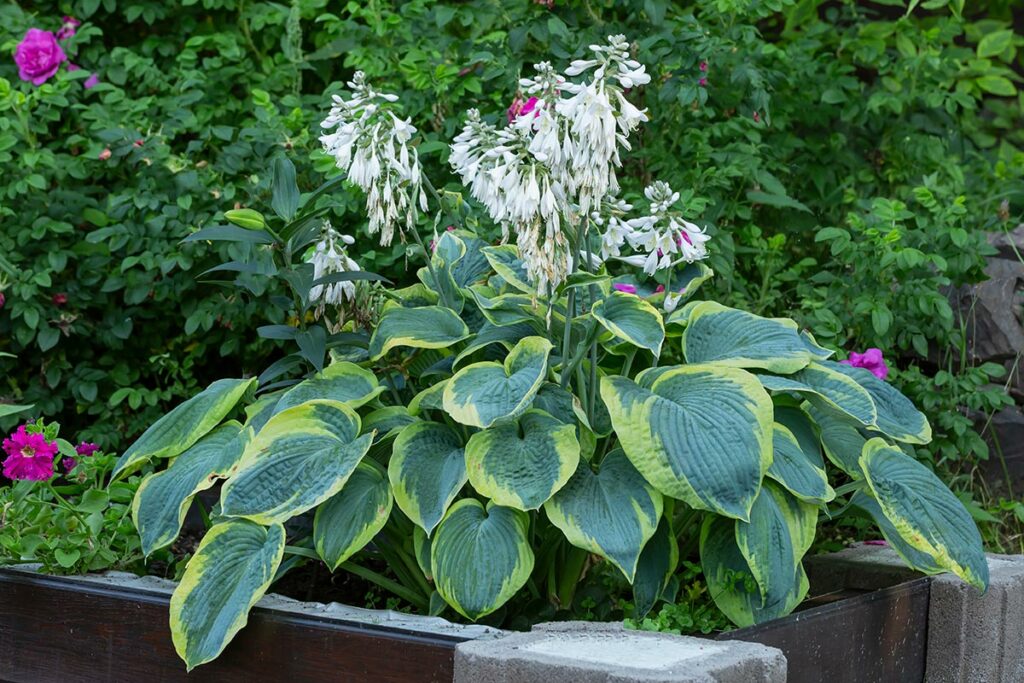
Adding hostas to your garden is a great way to bring some vivid greenery to it. Not only are they vibrant, but also they’re easy to grow and take care of.
That said, they experience some issues from time to time. You need to be aware of these problems to be ready to handle them once they appear.
This post will break down the 10 common problems with hostas plants. We’ll provide you with simple fixes to each as well.
The 10 Most Common Problems with Hostas Plants
Here’s a list of the most common issues your hostas can encounter at any time of the year:
1. Leaves Turning Yellow
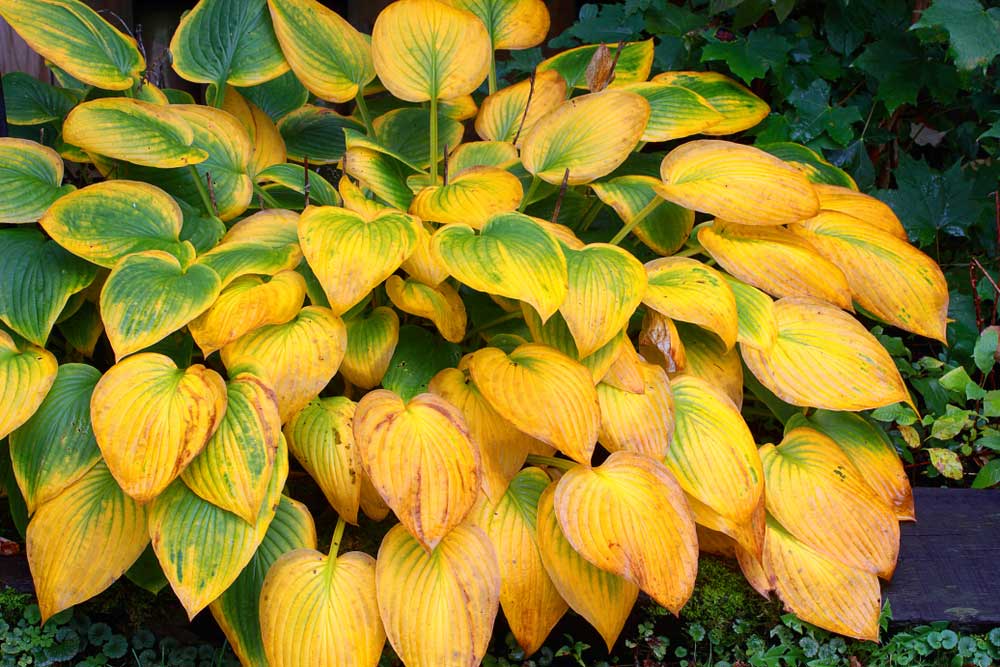
Multiple reasons can cause your hosta’s leaves to turn yellow. On top of these reasons is exposure to moisture for a long time. Continuous dampness negatively affects hostas and their leaves.
This moisture issue can result from using poorly drained soil. Hostas’s ideal soil is light and well-drained.
Overwatering the plant is another possible cause of excessive dampness.
The Solution
- Test the soil of your hostas by squeezing a handful of it. If it crumbles away, it’s okay. If it keeps its shape, it’s heavy and too moist.
- If the soil is heavy, add peat or coir to make it lighter.
- Watch your watering frequency and follow the instructions for watering hostas.
2. Leaves Turning Brown
Your hosta’s leaves can turn brown and crisp due to under-watering.
If you notice the appearance of brown color on the leaves, you need to check your watering frequency.
In addition, because most hostas prefer shade, too much sunlight exposure can cause their leaves to turn brown.
The Solution
- Ensure your hostas get sufficient water by watering them longer but slower.
- Quickly check the soil around all your plants after watering to make sure the water has reached every plant.
- Check your hosta species. If it prefers shade like most types, limit its exposure to sunlight to a maximum of 4 hours.
3. Bleached Leaves
Too much sun exposure can bleach your hostas’ leaves. This issue is common, especially during scorching times.
If you notice this change in the hosta’s foliage, you need to adjust your plant’s time of exposure to sunlight.
The Solution
- If the infected area is small, cut off the affected leaves.
- Place your hostas in a shady location, and only expose them to the sun for a maximum of 4 hours a day.
- If your entire garden doesn’t include a shady spot, increase the frequency and the quantity of watering. This decreases the effect of solar heat on the plant.
4. Dull Leaves
If your hostas’ leaves turn dull and are covered with silky webs, your plants face a spider mites attack.
You’ll quickly lose your plant’s exquisite look if these attacks continue. That way, you need to address this issue promptly.
The Solution
- Give the affected leaves a blast with your garden hose, then wipe them down.
- If the issue persists, spray the leaves with insecticidal soap.
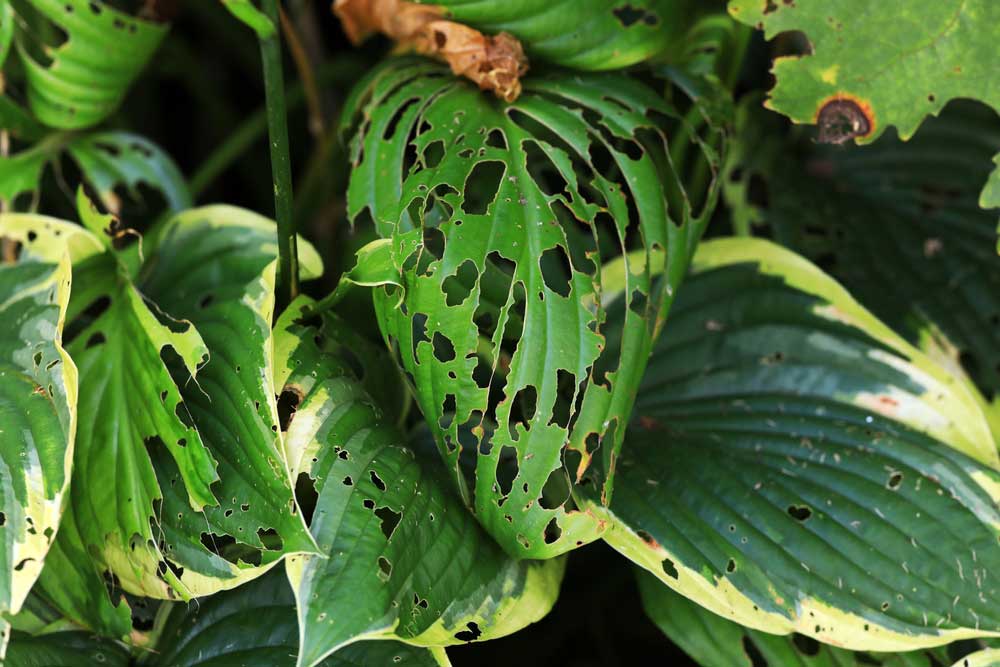
5. White Powder on the Foliage
If you start noticing a white powder over your plant’s leaves, this is probably a powdery mildew infection.
Powdery mildew is a fungal disease that affects various types of plants. This fungus propagates on wet leaves.
The Solution
Follow these tips to solve the problem and avoid it in the future:
- Eliminate the powdery mildew from the leaves using commercial fungicide spray.
- Try to water without spraying the leaves.
- Allow your plants to dry out between each watering.
- Avoid placing your hosta plant in an overcrowded space with other plants. Keep them in a place with adequate airflow.
6. Holes on the Leaves
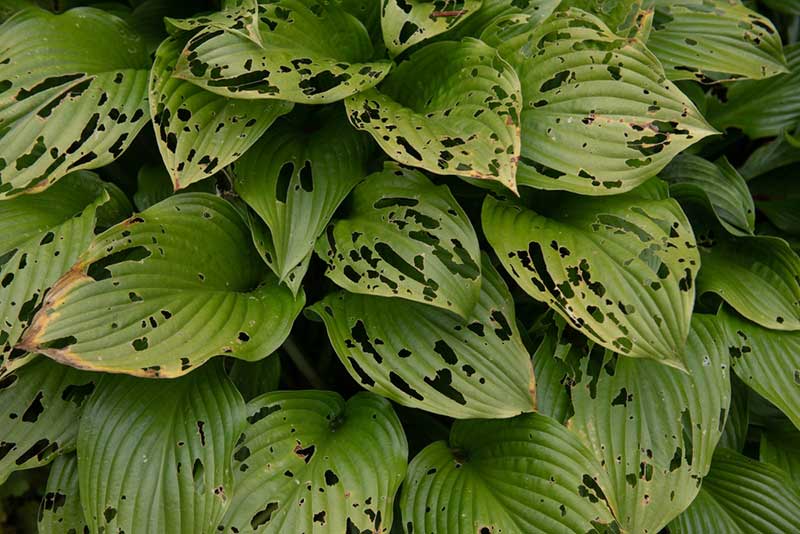
The holes on your hosta’s leaves are mostly caused by insect bites, particularly slugs, nemesis, and snails.
These insects thrive in a shady environment, the exact condition your hostas prefer. That way, they grow close to them, causing regular holes in their leaves.
This issue is prevalent in hosta types with thin leaves.
Solutions
- Crush some eggshells and spray them around your plants. The eggshells’ sharp edges can prevent these insects from reaching the plant.
- Surround your plants with slug and snail baits. These baits are typically cylindrical pellets that can poison these harmful insects.
7. Sticky Substance on the Leaves
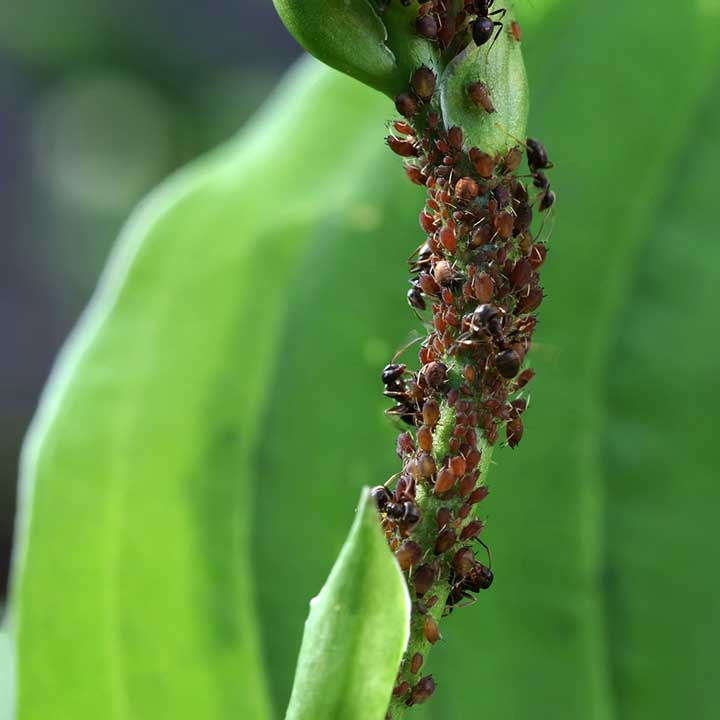
Insects in your garden can leave sticky substances on your hosta foliage. Aphids are one of the known causes of this phenomenon.
This insect secretes unsightly gummy sap on the leaves. The viscous liquid attracts more insects, increasing the risk of additional pest problems.
Likewise, mealybugs secrete a viscous substance called honeydew on your hostas foliage. This liquid can lead to the growth of black mold.
In either case, you need to control the infestation early, as the condition can quickly worsen.
Solutions for Aphids
- If the infected area is small, trim off the affected leaves.
- If the infestation is significant, spray the plant with insecticidal soap every week until the insects disappear.
Solutions for Mealybugs
- If the infected area is small, wipe it with a cotton swab soaked in isopropyl alcohol.
- If the infestation area is large, apply insecticidal soap on the infected space once a week.
8. Rotten Stems
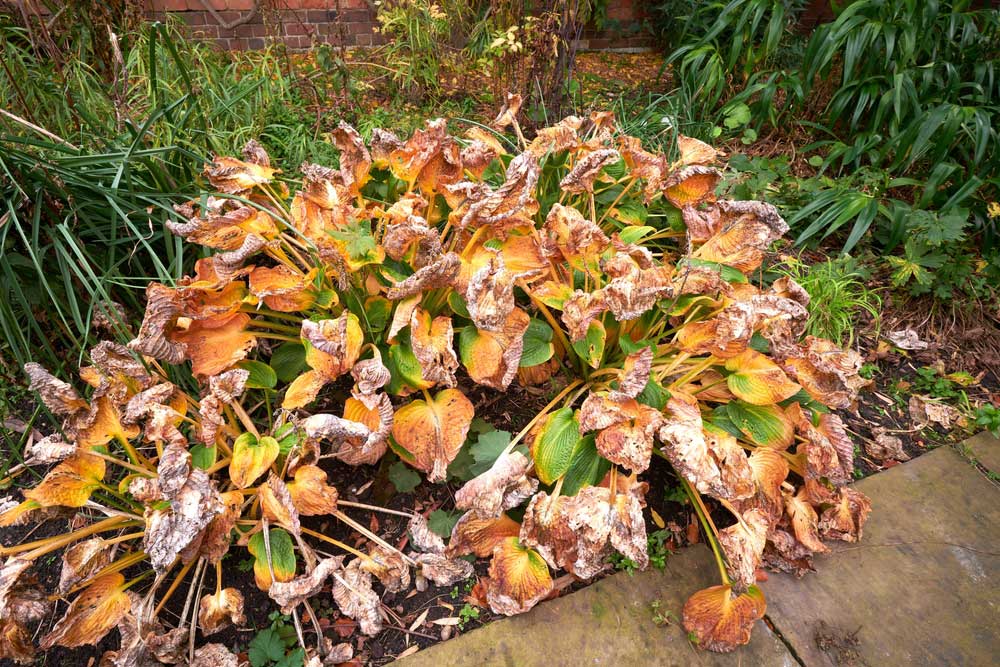
Many hosta species are prone to a fungal disease called petiole rot. This infection turns the margins of the plant yellow and causes the stems to rot.
Worse still, this fungus spreads quickly, which kills the whole plant.
The Solution
Although there’s no solution to this problem, you can prevent this issue by following these couple of tips:
- Ensure your garden tools are clean and sanitized before using them.
- Avoid placing mulch too close to the stems of the plant.
9. Large Fungal Spots
If you start noticing large spots with dark borders on your hosta’s leaves, these are symptoms of a fungal disease called anthracnose.
Although it won’t kill your plant, it ruins its beauty.
Prevention
- Avoid spraying the leaves when watering the plant. Instead, water the soil directly.
- Water the hostas early in the morning if you use an overhead sprinkler in your garden. This allows the leaves to dry off in the afternoon sun completely.
Solutions
- If the infestation is small, trim off the infected leaves.
- If the infected area is large, apply a fungicide containing chlorothalonil.
10. Eaten Leaves
If you keep deer or rabbits in your garden, it makes sense that your hosta’s leaves and stems are regularly being munched on.
Both animals love to chew on hosta foliage. So, they’ll take some bites from the leaves from time to time.
Solutions
- Use animal deterrent spray over your hostas to keep the animals away.
- Build a fence around your hostas to deter your deer or rabbits from reaching them.
Wrap Up
The 10 common problems with hostas plants are easily detectable and treatable. All you need is to follow the solutions mentioned above. That said, to avoid most of these issues in the first place, adhere to the required caring needs of your specific hosta species.





